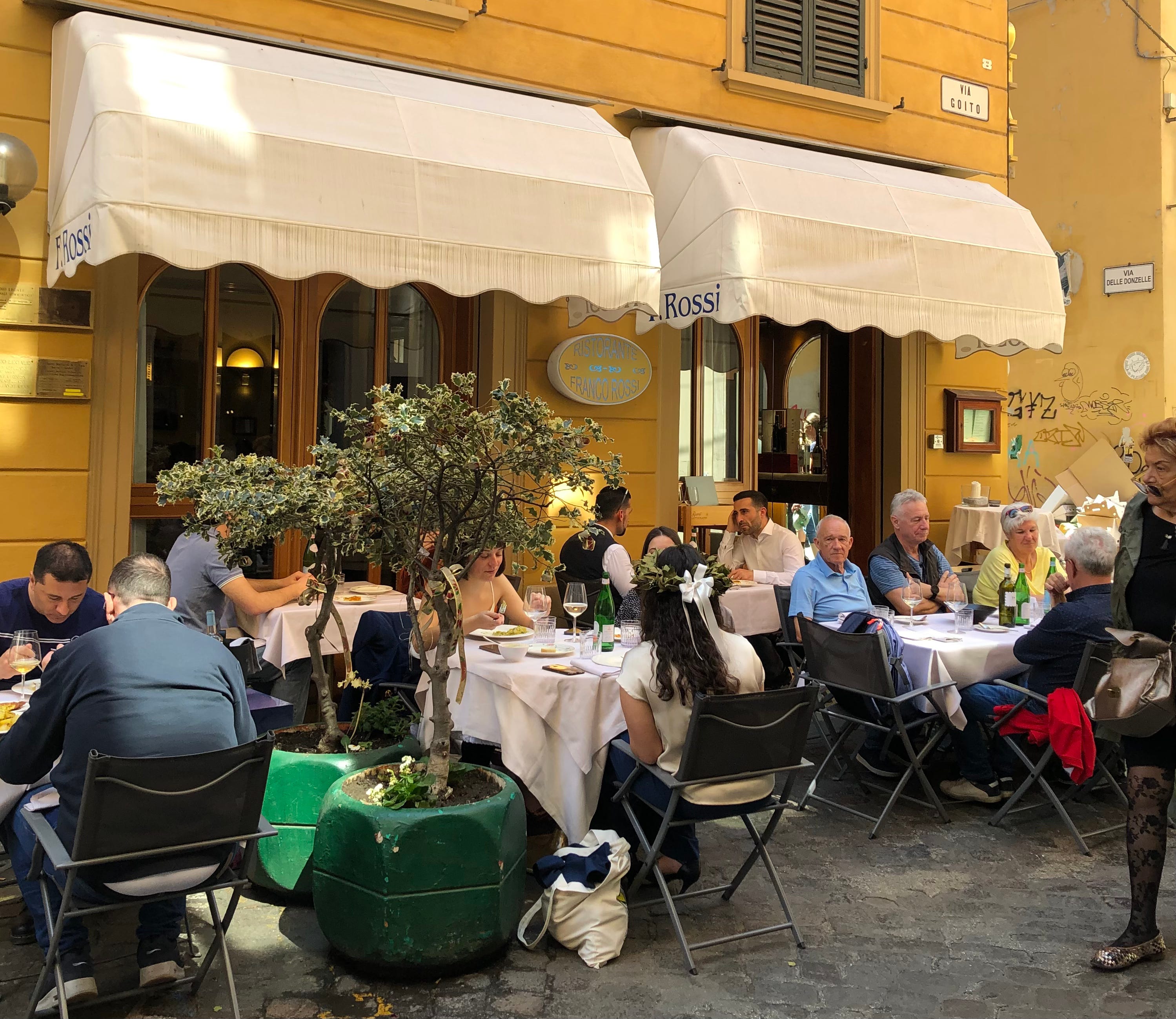So far in this series, we’ve covered how to find a hotel without an app, and how to navigate a new place without resorting to GPS. Now it’s time to consider the thing a lot of folks care most about when they travel: dinner.
Also lunch, breakfast, brunch, merienda, fika, tea, cocktails, wine, and late-night convenience store runs.
On the surface, this shouldn’t be difficult without the internet. Restaurants, cafés, bakeries, ice cream shops, food stalls: they’re all right there in front of you, with menus that explain their offerings, other customers you can spy on, and in some cases, open grills or stove tops at which you can watch the food being prepared. And yet, for a certain segment of the traveling public (I’m not going to use the noxious word ‘foodie’ here because, honestly, shouldn’t we have come up with a better one by now?), the decision about where and what to eat comes with the kind of pressure other people feel when they’re selecting a plastic surgeon or choosing their first born’s name.
Maybe that’s why ‘where should I eat?” is the decision that many travelers are the least likely to leave to serendipity. According to one survey, 45% of Gen Z and Millennial travelers book restaurants before they depart from home. 47% have planned trips around a single restaurant. And how do they know where to book? 66% get their intelligence from social media.
Which is weird, because dinner is, in and of itself, a pretty low-risk moment: there’s always another one tomorrow, and worst case scenario is that the food during the one in front of you is so disgusting that you end up cramming your face with chips and Slim Jims you pick up at the 7-Eleven afterwards. And yet, as I’ve written before, food has become so central to so many people’s sense of identity that a poor meal can seem not just like a missed opportunity but something close to a personal failing as well.
Also upping the stakes are the added burdens we put specifically on meals consumed while traveling At home, a good dinner out generally means delicious food, welcoming service, good company. But when we’re traveling, many of us pile on another criterion: for a meal to be good, it also needs that ineffable quality we call ‘authenticity.’ Which is a notoriously slippery term for a number of reasons, not least of which is that one of the things we often mean when we call a restaurant ‘authentic’ is that it’s not frequented by people like us.
It’s the hidden gem (another execrable phrase) dilemma: the foodie fantasy is to find that perfect restaurant that only locals know about, but once they have outed this ‘hidden gem’ to their 285,000 followers, it is no longer, of course, hidden. And because overwhelming numbers have a way of mucking up quality, it most likely won’t stay a gem either.
I’m one of those people who consider eating a major part of the travel experience, so I’ve wrestled quite a lot with these questions. Here’s some of the things I’ve learned, as I’ve tried, internet-free, to figure out where to eat:

